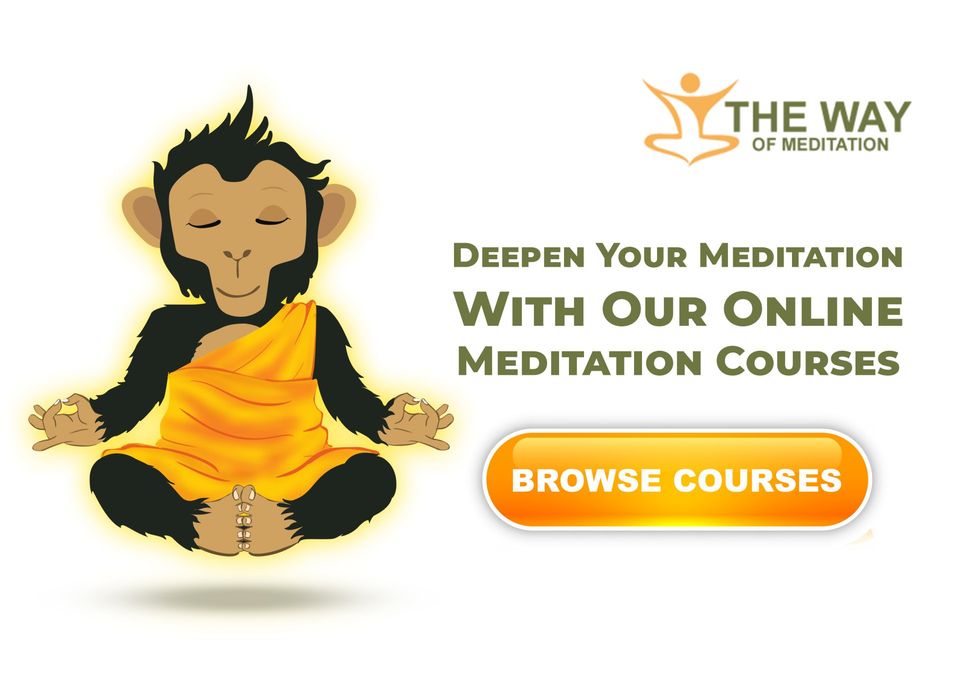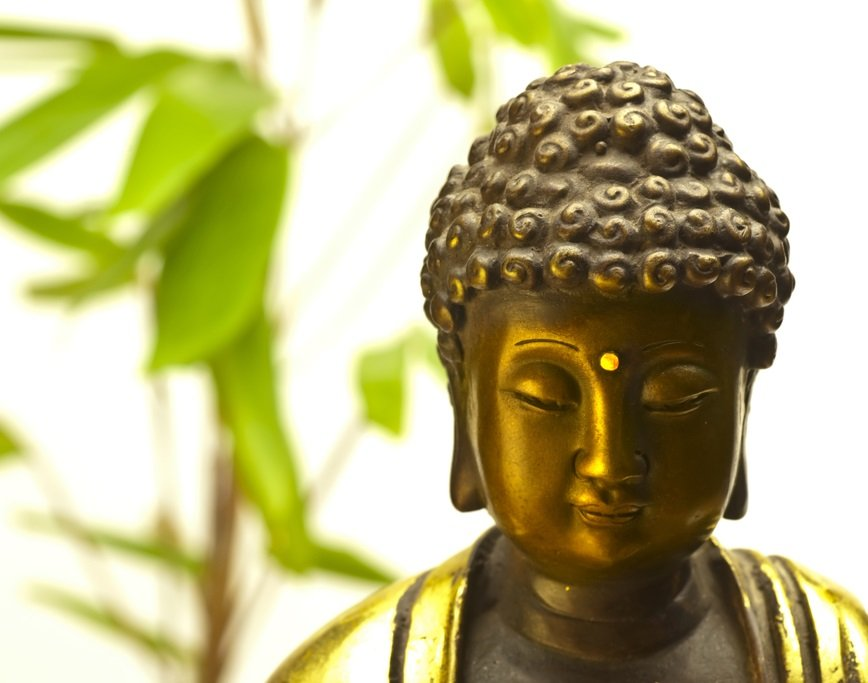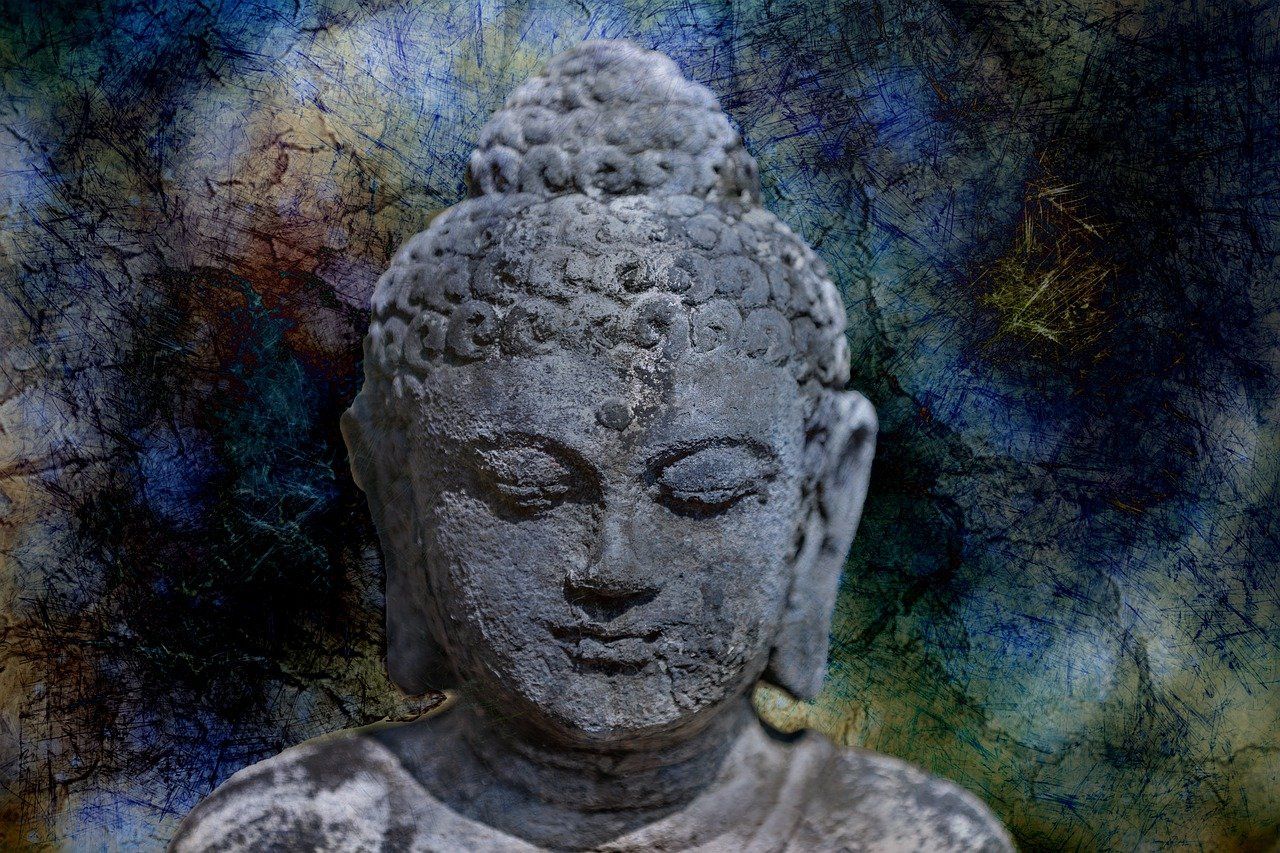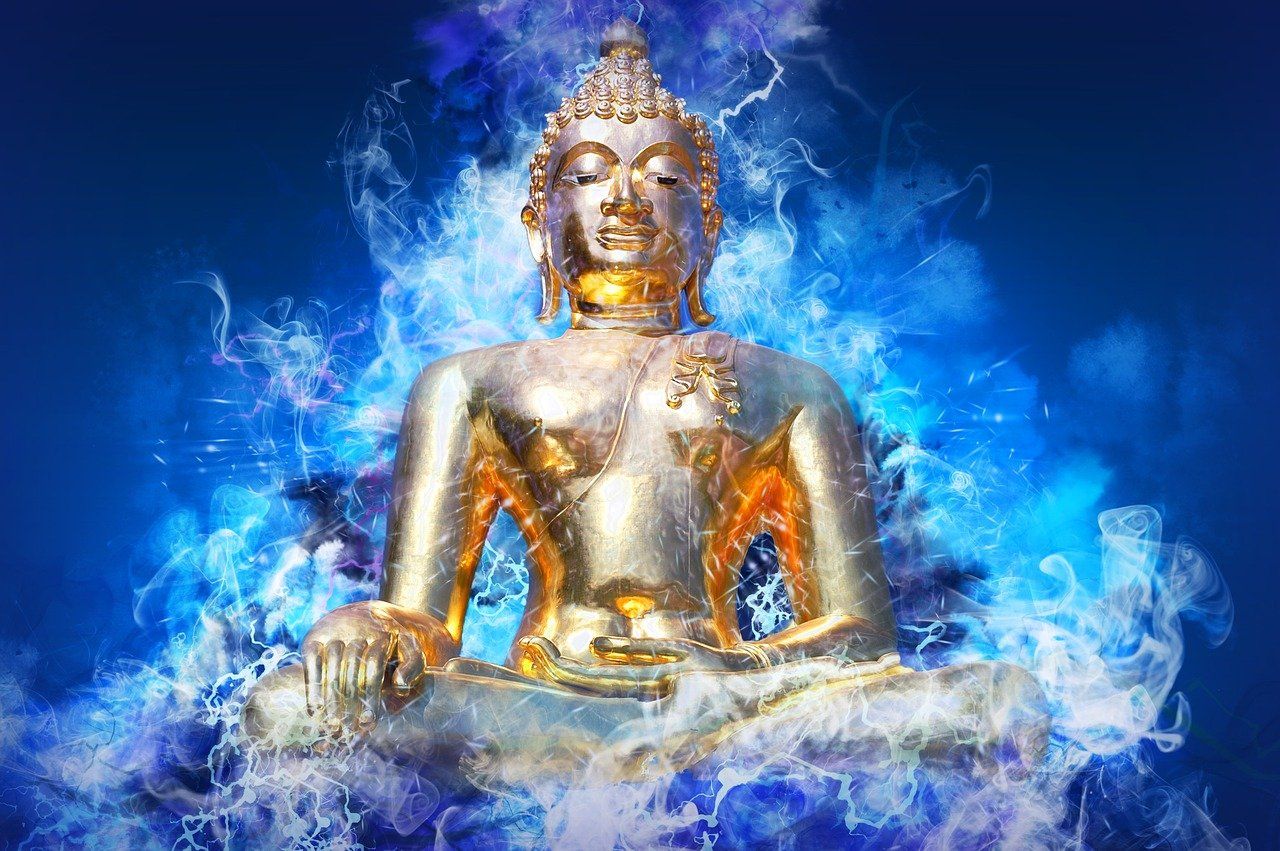The Way of Meditation Blog
Bringing Ancient Wisdom Into The Modern World
4 Buddhist Meditations and How To Do Them
Giovanni Dienstmann • April 29, 2015
1. Zen Meditation (Zazen)
Zazen ( 坐禅 ) means “seated Zen”, or “seated meditation”, in Japanese. It has its roots in the Chinese Zen Buddhism (Ch’an) tradition, tracing back to Indian monk Bodhidharma (6th century CE). In the West, its most popular forms comes from Dogen Zenji (1200~1253), the founder of Soto Zen movement in Japan. Similar modalities are practiced in the Rinzai school of Zen, in Japan and Korea.
How to do it
It is generally practiced seated on the floor over a mat and cushion, with crossed legs. Traditionally it was done in lotus or half-lotus position, but this is hardly necessary. You can use a kneeling stool, a chair or a cushion.
The most important aspectis keeping the back completely straight, from the pelvis to the neck. Mouth is kept close and eyes are kept lowered, with your gaze resting on the ground about two or three feet in front of you.
*See Tips for a great meditation posture HERE
As to the mind aspect of it, it’s usually practiced in two ways:
- Focusing on breath — focus all your attention on the movement of the breath going in and out through the nose. This may be aided by counting the breath in your mind. Each time you inhale you count one number, starting with 10, and then moving backward to 9, 8, 7, etc. When you arrive in 1, you resume from 10 again. If you get distracted and lose your count, gently bring back the attention to 10 and resume from there.
- Shikantaza (“just sitting”) — in this form the practitioner does not use any specific object of meditation; rather, practitioners remain as much as possible in the present moment, aware of and observing what passes through their minds and around them, without dwelling on anything in particular. It’s a type of Effortless Presence meditation
Learn more:
Zazen is a very sober meditation style, and you can easily find a lot of strong communities practicing it, as well as plenty of information on the internet. There is a lot of emphasis in keeping the right posture, as an aid for concentration. It is usually practiced in Zen Buddhist centers (Sangha), with strong community support.
In many of them you will find it coupled with other elements of Buddhist practice: prostrations, a bit of ritualism, chanting, and group readings of the Buddha teachings. Some people will like this, others won’t. Personally, I practiced zazen in a Buddhist group for 3 years, and I found that those elements and a bit of formality can also help create a structure for the practice, and in themselves they are also meditative.
Origin & Meaning
“Vipassana” is a Pali word that means “insight” or “clear seeing”. It is a traditional Buddhist practice, dating back to 6th century BC. Vipassana-meditation, as taught in the last few decades, comes from the Theravada Buddhist tradition, and was popularized by S. N. Goenka and the Vipassana movement.
Due to the popularity of Vipassanā-meditation, the “mindfulness of breathing” has gained further popularity in the West as “mindfulness”.
How to do it
[There is some conflicting information on how to practice Vipassana. In general, however, most teachers emphasize starting with mindfulness of breath in the first stages, and then move on to developing “clear insight” on the bodily sensations and mental phenomena. Here goes an introduction, aimed for beginners. To know more I’d suggest following up the links provided or learning from a teacher (perhaps in a Vipassana retreat).]
Ideally, one is to sit on a cushion on the floor, cross-legged, with your spine erect; alternatively, a chair may be used, but the back should not be supported.
*See Tips for a great meditation posture HERE
Focus all your attention, from moment to moment, on the movement of your breath. Notice the subtle sensations of the movement of the abdomen rising and falling. Alternatively, one can focus on the sensation of the air passing through the nostrils and touching the upper lips skin – though this requires a bit more practice, and is more advanced.
As you focus on the breath, you will notice that other perceptions and sensations continue to appear: sounds, feelings in the body, emotions, etc. Simply notice these phenomena as they emerge in the field of awareness, and then return to the sensation of breathing.
The object that is the focus of the practice (for instance, the movement of the abdomen) is called the “primary object”. And a “secondary object” is anything else that arises in your field of perception – either through your five senses (sound, smell, itchiness in the body, etc.) or through the mind (thought, memory, feeling, etc.). If a secondary object hooks your attention and pulls it away, or if it causes desire or aversion to appear, you should focus on the secondary object for a moment or two, labeling it with a mental note, like “thinking”, “memory”, “hearing”, “desiring”.
A mental note identifies an object in general but not in detail. When you’re aware of a sound, for example, label it “hearing” instead of “motorcycle,” “voices” or “barking dog.” If an unpleasant sensation arises, note “pain” or “feeling” instead of “knee pain” or “my back pain.” Then return your attention to the primary meditation object. When aware of a fragrance, say the mental note “smelling” for a moment or two. You don’t have to identify the scent.
Learn more:
Vipassana is an excellent Buddhist meditation to help you ground yourself in your body, and understand how the processes of your mind work. It is a very popular style of meditation. You can find plenty of teachers, websites, and books about it, as well as 3~10 days retreats (donation based). The teaching of it is always free. There are no formalities or rituals attached to the practice.
If you are completely new to meditation, Vipassana or Mindfulness are probably good ways for you to start.
- Zen Mountain Monastery
- Open Way (PDF)
- Visit a Zen Buddhist center near to you. Most of them teach zazen for free.
Zazen is a very sober meditation style, and you can easily find a lot of strong communities practicing it, as well as plenty of information on the internet. There is a lot of emphasis in keeping the right posture, as an aid for concentration. It is usually practiced in Zen Buddhist centers (Sangha), with strong community support.
In many of them you will find it coupled with other elements of Buddhist practice: prostrations, a bit of ritualism, chanting, and group readings of the Buddha teachings. Some people will like this, others won’t. Personally, I practiced zazen in a Buddhist group for 3 years, and I found that those elements and a bit of formality can also help create a structure for the practice, and in themselves they are also meditative.
2. Vipassana Meditation
“Vipassana” is a Pali word that means “insight” or “clear seeing”. It is a traditional Buddhist practice, dating back to 6th century BC. Vipassana-meditation, as taught in the last few decades, comes from the Theravada Buddhist tradition, and was popularized by S. N. Goenka and the Vipassana movement.
Due to the popularity of Vipassanā-meditation, the “mindfulness of breathing” has gained further popularity in the West as “mindfulness”.
How to do it
[There is some conflicting information on how to practice Vipassana. In general, however, most teachers emphasize starting with mindfulness of breath in the first stages, and then move on to developing “clear insight” on the bodily sensations and mental phenomena. Here goes an introduction, aimed for beginners. To know more I’d suggest following up the links provided or learning from a teacher (perhaps in a Vipassana retreat).]
Ideally, one is to sit on a cushion on the floor, cross-legged, with your spine erect; alternatively, a chair may be used, but the back should not be supported.
*See Tips for a great meditation posture HERE
Focus all your attention, from moment to moment, on the movement of your breath. Notice the subtle sensations of the movement of the abdomen rising and falling. Alternatively, one can focus on the sensation of the air passing through the nostrils and touching the upper lips skin – though this requires a bit more practice, and is more advanced.
As you focus on the breath, you will notice that other perceptions and sensations continue to appear: sounds, feelings in the body, emotions, etc. Simply notice these phenomena as they emerge in the field of awareness, and then return to the sensation of breathing.
The object that is the focus of the practice (for instance, the movement of the abdomen) is called the “primary object”. And a “secondary object” is anything else that arises in your field of perception – either through your five senses (sound, smell, itchiness in the body, etc.) or through the mind (thought, memory, feeling, etc.). If a secondary object hooks your attention and pulls it away, or if it causes desire or aversion to appear, you should focus on the secondary object for a moment or two, labeling it with a mental note, like “thinking”, “memory”, “hearing”, “desiring”.
A mental note identifies an object in general but not in detail. When you’re aware of a sound, for example, label it “hearing” instead of “motorcycle,” “voices” or “barking dog.” If an unpleasant sensation arises, note “pain” or “feeling” instead of “knee pain” or “my back pain.” Then return your attention to the primary meditation object. When aware of a fragrance, say the mental note “smelling” for a moment or two. You don’t have to identify the scent.
Learn more:
- Types of Vipassana (read the answer from Anh-Minh Do)
- Vipassana Dhura (very in-depth article)
- Vipassana for beginners (Goenka style)
- Mindfulness in Plain English (free eBook)
Vipassana is an excellent Buddhist meditation to help you ground yourself in your body, and understand how the processes of your mind work. It is a very popular style of meditation. You can find plenty of teachers, websites, and books about it, as well as 3~10 days retreats (donation based). The teaching of it is always free. There are no formalities or rituals attached to the practice.
If you are completely new to meditation, Vipassana or Mindfulness are probably good ways for you to start.
3. Mindfulness Buddhist Meditation
Mindfulness Meditation is an adaptation from traditional Buddhist meditation practices, especially Vipassana, but also having strong influence from other lineages, such as the Vietnamese Zen Buddhism from Thich Nhat Hanh ). “Mindfulness” is the common western translation for the Buddhist term sati. Anapanasati, “mindfulness of breathing”, is part of the Buddhist practice of Vipassana or insight meditation, and other Buddhist meditational practices, such as zazen.
One of the main influencers for Mindfulness in the West is John Kabat-Zinn. His Mindfulness-Based Stress Reduction program (MBSR) – which he developed in 1979 at the University of Massachusetts Medical School – has been used in several hospitals and health clinic on the past decades.
How to do it
Mindfulness meditation is the practice of intentionally focusing on the present moment, accepting and non-judgmentally paying attention to the sensations, thoughts, and emotions that arise.
For the “formal practice” time, sit on a cushion on the floor, or on a chair, with straight and unsupported back. Pay close attention to the movement of your breath. When you breath in, be aware that you are breathing in, and how it feels. When you breath out, be aware you are breathing out. Do like this for the length of your meditation practice, constantly redirecting the attention to the breath.
Your mind will get distracted with sounds, sensations, and thoughts. Whenever that happens, gently recognize that you have been distracted, and bring the attention back to the breathing.
Learn to enjoy your practice. Once you are done, appreciate how different the body and mind feel.
There is also the practice of mindfulness during our daily activities: while eating, walking, and talking. For “daily life” meditation, the practice is to pay attention to what is going on in the present moment, to be aware of what is happening – and not living in “automatic mode”. If you are speaking, that means paying attention to the words you speak, how you speak them, and to listen with presence and attention. If you are walking, that means being more aware of your body movements, your feet touching the ground, the sounds you are hearing, etc.
Your effort in seated practice supports your daily life practice, and vice-versa. They are both equally important.
Learn more:
- Psychology Today (more details on how to practice)
- Palouse Mindfulness (MBSR free online course)
- Mindfulness exercises
- Mindful Schools
- How to Improve Concentration
For the general public, this is perhaps the most advisable way to get started with meditation. It is the type of meditation that is most taught at schools and hospitals, as far as I am aware. The “mindfulness movement” as practiced nowadays in society at large, is not Buddhism, but an adaptation of Buddhist practices due to their benefits in good physical and mental health and general wellbeing.
For most people, Mindfulness Meditation may be the only type of meditation they will like, especially if their focus is only the physical and mental benefits of meditation, as it is usually taught dissociated from several of the eastern concepts and philosophies that traditionally accompanied the practice. And for that it is great – it will bring many good things to your life.
If your focus is a deeper transformation and spiritual development, however, then mindfulness meditation may be just an initial step for you. From here you can then move into Vipassana, Zazen, or other types of meditation.
4. Loving Kindness Buddhist Meditation (Metta Meditation)
Metta is a Pali word that means kindness, benevolence, and good will. This practice comes from the Buddhist traditions, especially the Theravada and Tibetan lineages. “Compassion meditation” is a contemporary scientific field that demonstrates the efficacy of metta and related meditative practices.
Demonstrated benefits include: boosting one’s ability to empathize with others; development of positive emotions through compassion, including a more loving attitude towards oneself; increased self-acceptance; greater feeling of competence about one’s life; and increased feeling of purpose in life
How to do it
One sits down in a meditation position, with closed eyes, and generates in his mind and heart feelings of kindness and benevolence. Start by developing loving-kindness towards yourself, then progressively towards others and all beings. Usually this progression is advised:
- oneself
- a good friend
- a “neutral” person
- a difficult person
- all four of the above equally
- and then gradually the entire universe
The more you practice this meditation, the more joy you will experience. That is the secret of Mathieu Richard’s happiness.
“For one who attends properly to the liberation of the heart by benevolence, unarisen ill will does not arise and arisen ill will is abandoned.” – The Buddha
Learn more:
- Wikipedia on Metta Meditation
- Metta Institute (Buddha’s word on metta)
- Huffington Post article on the benefits of metta
- 8 Verses for training the heart in compassion
Are you sometimes too hard on yourself or on others? Or feel like you need to improve your relationships? Loving-kindness meditation will help you. It is beneficial both for selfless and self-centered people, and it will help increase your general level of happiness. You cannot feel loving-kindness and depression (or any other negative feeling) at the same time.
It is also often recommended, by Buddhist teachers, as an antidote to insomnia, nightmares, or anger issues.
Written by Giovanni Dienstmann
Get A FREE
Guided Meditation Series
with Chad Foreman

In today’s fast-paced world, the mind often races, driven by the demands of work, family, and personal ambitions. Meditation is commonly seen as a practice to calm the mind, foster inner peace, and connect with deeper aspects of existence. Yet, one crucial element often overlooked is the state of the body, particularly the nervous system. Relaxing the nervous system isn’t just a preparatory step; it is foundational for unlocking the deeper states of awareness and tranquility that meditation promises. Drawing insights from my journey and teachings, we will explore why this is so vital and how it transforms the meditative experience.












